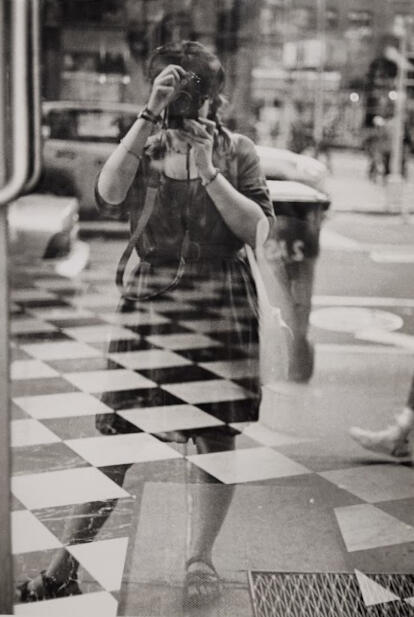Dr. Isabel L. Colman
she/her
Astrophysicist · Faculty at NYU Liberal Studies
 I'm an astrophysicist hailing from Sydney, Australia, the traditional lands of the Gadigal people of the Eora nation. I currently live and work in Manhattan, the ancestral homeland of the Lenape.
I'm an astrophysicist hailing from Sydney, Australia, the traditional lands of the Gadigal people of the Eora nation. I currently live and work in Manhattan, the ancestral homeland of the Lenape.
I'm a Clinical Assistant Professor at NYU Liberal Studies, an interdisciplinary undergraduate college. I'm also the PI on a grant that was selected for funding as part of NASA's ROSES 2023 call for proposals, under the Astrophysics Data Analysis program. Prior to joining LS, I was a postdoctoral fellow at the American Museum of Natural History (2021–2024). I have a PhD in Astronomy (2016–2020) and a Bachelor of Science (Advanced) with Honours in Physics and a second major in mathematics (2012–2015), both from the University of Sydney. (An honours program, in Australia, is a one-year intensive study course equivalent to a Masters degree.)
I specialize in developing innovative data science approaches to solving problems in stellar astrophysics. I use data from NASA's Kepler, K2, and TESS missions to identify and analyze variable stars — anything where you can detect changes in brightness over time. This has led me to study asteroseismology, stellar rotation, and binary star systems, and now I'm embarking on a variability survey of the Magellanic Clouds with TESS data.
I also have a broad range of academic experience outside of research. In 2020, I worked as a contractor for Lightkurve, a Python package for TESS/Kepler data analysis. I gained experience as a professional software developer, and wrote user tutorials. I've mentored students and have a long history of teaching astronomy, physics, programming, and numerics to an undergraduate audience. I am also passionate about making tertiary education accessible, and during my graduate studies I worked part-time as a scribe, reader, and invigilator for students who required special accommodations for exams. I'm enthusiastic about scientific writing, and I've peer reviewed extensively.
Outside of my work, I'm a classically-trained choral singer and an avid film photographer. I'm into art, architecture, and design. This webpage is modeled after the work of Pelican Books designers in the 60s and 70s.
PhD — The Sydney Institute for Astronomy, University of Sydney (2016–20); supervised by Timothy Bedding and Daniel Huber
PhD thesis: Pixels, photometry, and population studies: variable stars across four years of Kepler data, accepted June 2020
BSc (Adv) (Hons. Physics) — University of Sydney (2012–15); double major in physics and applied mathematics
As first author
Methods for the detection of stellar rotation periods in individual TESS sectors and results from the Prime mission, AJ, April 2024
The Kepler IRIS Catalog: Image Subtraction Light Curves for 9150 Stars in and around the Open Clusters NGC 6791 and NGC 6819, ApJS, February 2022
Evidence for compact binary systems around Kepler red giants, MNRAS, August 2017
+
As a contributing author
Evidence of Truly Young high-α Dwarf Stars, Yuxi (Lucy) Lu et al., AJ, March 2025
Discovery of post-mass-transfer helium-burning red giants using asteroseismology, Yaguang Li et al., Nature Astronomy, April 2022
Further Evidence of Modified Spin-down in Sun-like Stars: Pile-ups in the Temperature-Period Distribution, Trevor David et al., ApJ, March 2022
A binary with a δ Scuti star and an oscillating red giant: orbit and asteroseismology of KIC 9773821, Simon Murphy et al., MNRAS, August 2021
The effect of tides on near-core rotation: analysis of 35 Kepler γ Doradus stars in eclipsing and spectroscopic binaries, Gang Li et al., MNRAS, October 2020
Very regular high-frequency pulsation modes in young intermediate-mass stars, Tim Bedding et al., Nature, May 2020
A search for red giant solar-like oscillations in all Kepler data, Marc Hon et al., MNRAS, June 2019
The Curious Case of KOI 4: Confirming Kepler’s First Exoplanet Detection, Ashley Chontos et al., AJ, May 2019
Échelle diagrams and period spacings of g modes in γ Doradus stars from four years of Kepler observations, Tim Bedding et al., conference paper, September 2015
K 1-6: An Asymmetric Planetary Nebula with a Binary Central Star, David Frew et al., PASA, March 2011
+
Software
Lightkurve v2.0.9, March 2021
Lightkurve tutorials: custom photometry, instrumental noise #1, instrumental noise #2, instrumental noise #3, instrumental noise #4, signal verification
+
Press
LIUniverse podcast, May 2023
Kepler's final exoplanet discovery revealed, March 2019
What a gas, students join astronomy's stars, September 2010
TESS Science Conference III, July 2024 — presented a poster
Cool Stars 22, June 2024 — presented a poster
TASC 7/KASC 14 Workshop, July 2023 — presented a talk (view on Youtube)
Cool Stars 21, July 2022
Fifty Years of the Skumanich Relations, March 2022 — presented a talk
TESS Science Conference II, online, July 2021
online.tess.science, September 2020
TESS Ninja 3, February 2020
TESS Science Conference I, July 2019
TASC5/KASC12 Workshop, July 2019 — presented a talk
First Light in a new Era of Astrophysics, TASC4/KASC11 Workshop, July 2018 — presented a talk
Planets in Peculiar Places, April 2018 — member of local organising committee
Statistical Challenges in Astronomy, December 2017
Inaugural Stars in Sydney meeting at Macquarie University, November 2017 — presented a talk
IVth Azores International Advanced School in Space Sciences, July 2016
Seismology of the Sun and Distant Stars, July 2016 — presented a poster
5th Australian Exoplanet Workshop, December 2015
ILC 2024
